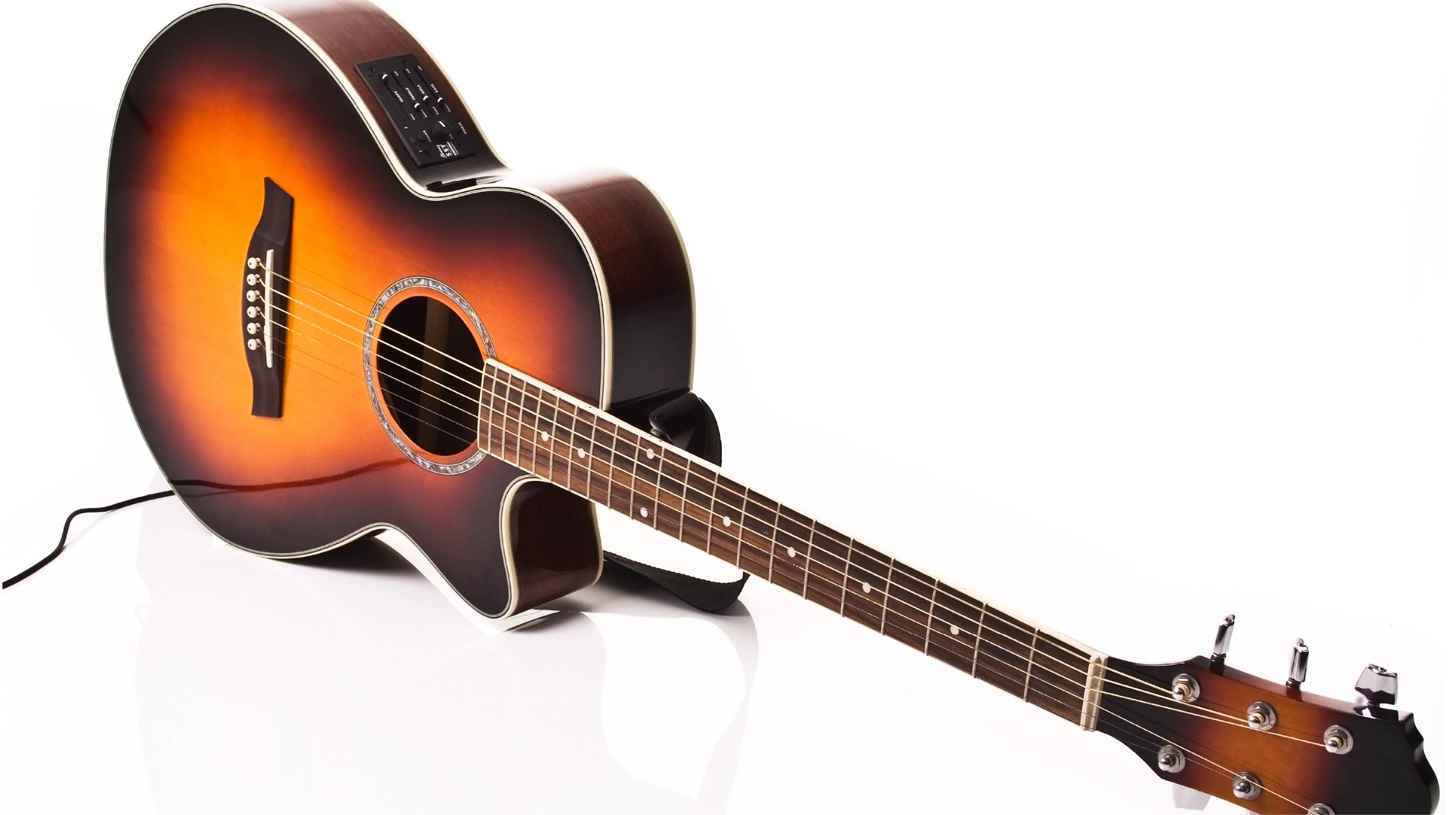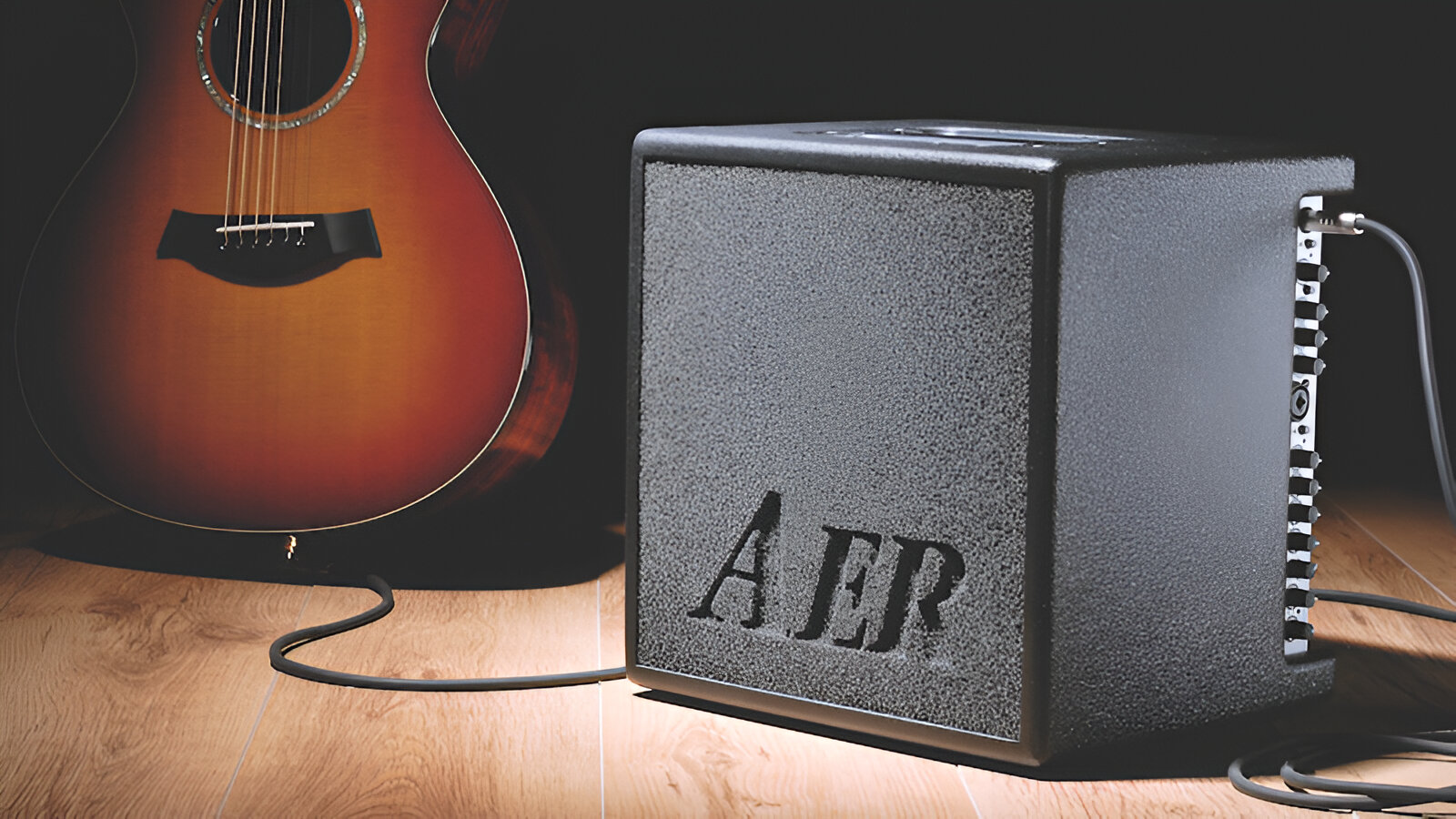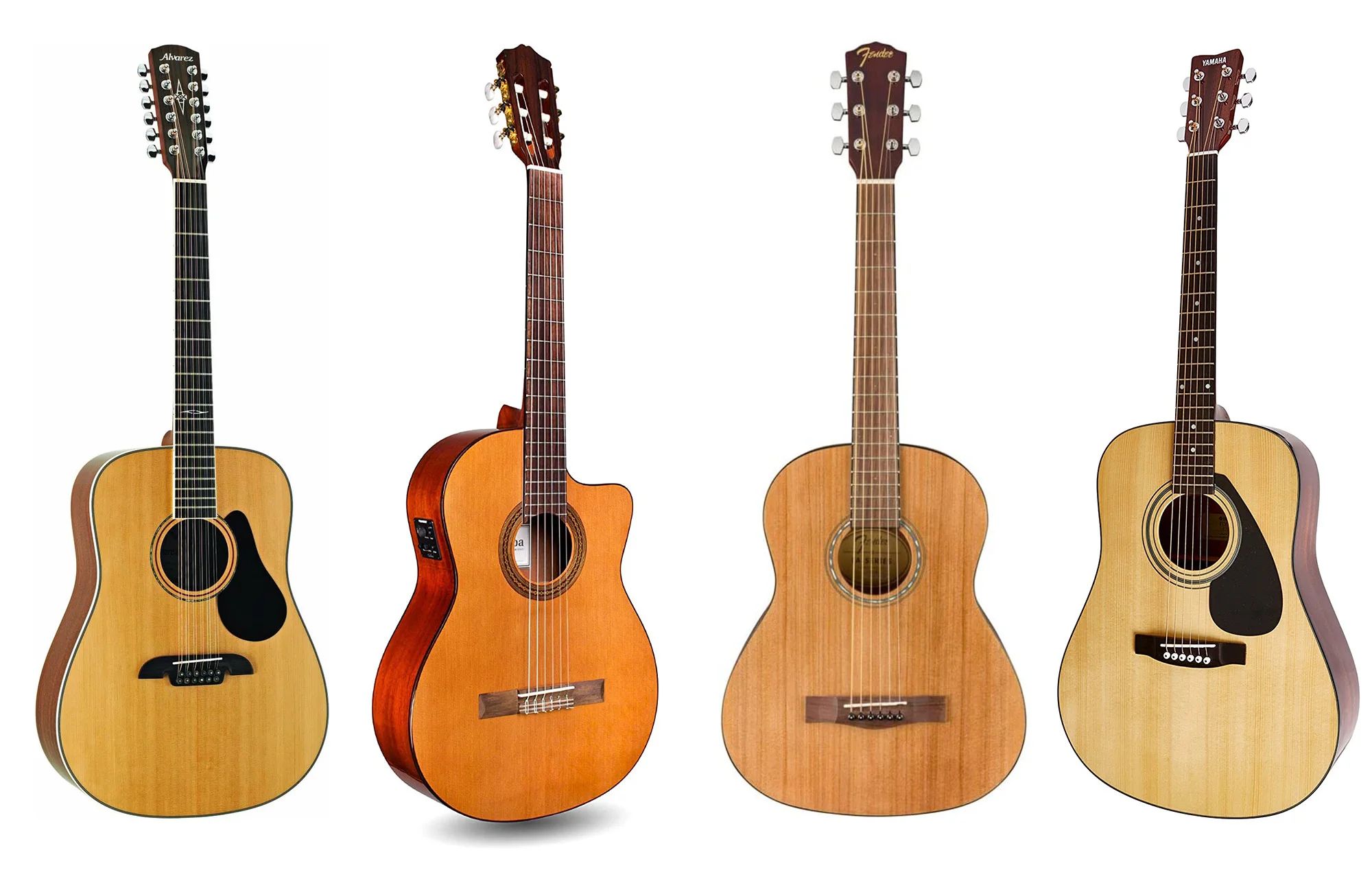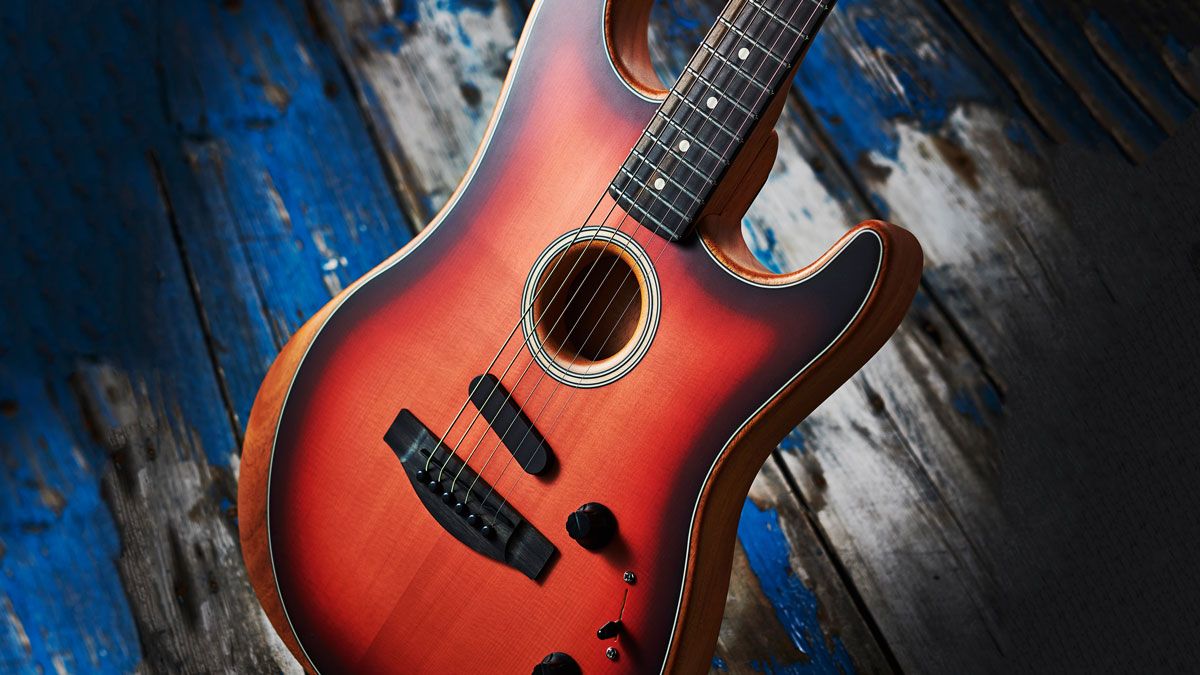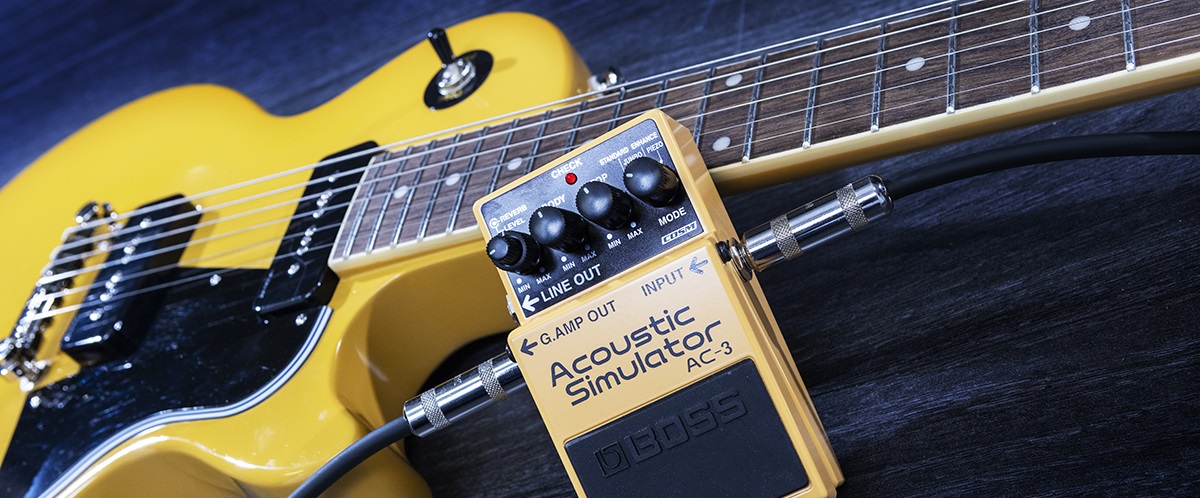Introduction
When it comes to choosing a guitar, one of the first decisions you’ll have to make is whether to go for an electric guitar or an acoustic guitar. Electric guitars and acoustic guitars differ significantly in their design, sound, and playing style. Understanding the differences between these two types of guitars can help you make an informed decision based on your musical preferences and playing needs.
An electric guitar is an instrument that relies on pickups and amplification to produce sound. It is typically made of solid wood or composite materials, with a thinner body compared to an acoustic guitar. On the other hand, an acoustic guitar generates sound through the vibration of its hollow body, without the need for external amplification. It is constructed with a larger body, a soundboard, and a hollow cavity to project sound naturally.
In this article, we will explore the distinct features of electric guitars and acoustic guitars, highlighting their structural differences, sound characteristics, amplification methods, playing styles, portability, maintenance requirements, and price ranges. By the end, you will have a clearer understanding of which type of guitar suits your musical goals and preferences.
Basic Difference
The fundamental distinction between an electric guitar and an acoustic guitar lies in how they produce sound. An electric guitar requires an amplifier to amplify the signal produced by its pickups, while an acoustic guitar generates sound acoustically without any additional amplification.
The electric guitar’s pickups use magnets and coils to convert the string vibrations into electrical signals. These signals are then sent to an amplifier, which shapes and enhances the sound before it is heard through speakers. The ability to manipulate the tone and volume through amplification offers a wide range of sonic possibilities, making electric guitars popular in various genres like rock, blues, and jazz.
On the other hand, an acoustic guitar relies on its hollow body and sound hole to project sound naturally. When the strings are plucked or strummed, their vibrations resonate within the body, creating a rich, unamplified sound. This makes acoustic guitars a favorite among singer-songwriters, folk musicians, and those who prefer the organic timbre of an acoustic instrument.
Another key difference is the construction of the guitars. Electric guitars typically have a solid or semi-hollow body with a sleek design for easy access to the higher frets. They often have thinner necks, making them more comfortable for players who prefer faster and more intricate playing styles.
On the other hand, acoustic guitars feature a larger body with a hollow sound chamber, allowing for greater resonance and projection. The neck is typically thicker and wider compared to electric guitars, providing more space between the strings, which is favorable for fingerstyle playing and strumming.
Overall, the basic difference between an electric guitar and an acoustic guitar lies in their sound production and construction, ultimately impacting the playing experience and the genres they are commonly associated with. Understanding these differences will help you make an informed choice when selecting the right guitar for your musical aspirations.
Structure
When it comes to the structure, electric guitars and acoustic guitars have notable distinctions. Electric guitars typically have a solid or semi-hollow body construction. The body is made of solid wood or composite materials, which allows for more control over the tone and sustain of the instrument. The design of electric guitars also often includes cutaways, which provide easy access to higher frets for lead guitar playing.
In contrast, acoustic guitars have a hollow body design. The body is made of wood, usually spruce or mahogany, with a sound hole on the top. This hollow body construction contributes to the acoustic guitar’s resonance and volume. The shape and size of the body impact the tone and projection of the instrument. Acoustic guitars come in various styles, including dreadnought, concert, and jumbo, each with its own unique body shape and size.
Another difference in the structure is the presence of a soundboard on acoustic guitars. The soundboard, often made of spruce, is responsible for amplifying the vibrations of the strings and projecting the sound. It is an essential component that greatly influences the guitar’s tonal quality and overall resonance.
Additionally, electric guitars typically have thinner necks compared to acoustic guitars. This feature makes them more conducive to fast playing and intricate guitar techniques like bending and shredding. The thinner neck allows the player’s hand to reach and navigate the fretboard with greater ease.
On the other hand, acoustic guitars typically have thicker and wider necks. This design offers more space between the strings, enabling fingerstyle playing and chord strumming. The wider neck also contributes to the acoustic guitar’s resonant and full sound.
While both electric and acoustic guitars share the same basic elements, such as the neck, frets, and strings, their structural differences greatly influence the playing experience and the type of music they are best suited for. Whether you prefer the sleek and versatile design of an electric guitar or the classic and resonant construction of an acoustic guitar, the structure of the instrument plays a significant role in your overall playing satisfaction.
Sound
The sound produced by electric guitars and acoustic guitars differs in terms of tone, volume, and overall character. The primary factor contributing to these divergences is the method of sound amplification.
Electric guitars rely on pickups to convert the string vibrations into electrical signals. These signals are then processed by an amplifier, allowing for a wide range of sound manipulation. The tone of an electric guitar can vary significantly depending on factors such as the type of pickups, the amplifier settings, and the use of effects pedals. This versatility enables players to achieve a broad spectrum of tones, from clean and warm to distorted and aggressive. Electric guitars are particularly favored for genres such as rock, blues, jazz, and metal, where the ability to shape the sound is crucial.
On the other hand, acoustic guitars produce a natural, unamplified sound. The vibrations from the strings resonate within the hollow body and are projected through the soundhole. The tone of an acoustic guitar is influenced by various factors, including the type of wood used for construction, the body shape and size, and the player’s technique. Acoustic guitars generally have a warm and rich tone, emphasizing the natural character of the instrument. They are widely used in folk, country, and singer-songwriter genres, as well as for solo performances and intimate settings.
Additionally, acoustic guitars offer a wide dynamic range, responding to the player’s touch and intensity. They can produce soft, delicate tones when played softly, and bold, vibrant tones when played with more force. This expressive capability makes acoustic guitars suitable for conveying emotion and nuance in music.
It is important to note that electric guitars can also produce clean, unamplified tones when played without the use of an amplifier. However, the sound may lack the same resonance and projection as an acoustic guitar due to the lack of a hollow body.
Ultimately, the sound differences between electric guitars and acoustic guitars offer distinct sonic possibilities and cater to different musical styles and preferences. Whether you crave the versatility and customizable tones of an electric guitar or the organic and natural sound of an acoustic guitar, the choice will depend on your musical goals and personal taste.
Amplification
One of the significant differences between electric guitars and acoustic guitars lies in the method of amplification. Electric guitars require external amplification to produce their intended sound, while acoustic guitars can be played directly without additional amplification.
Electric guitars depend on pickups, which are coils of wire that detect the string vibrations and convert them into electrical signals. These signals are then sent to an amplifier through a cable. The amplifier processes the signals and enhances the sound, allowing the player to control the volume, tone, and various effects. This amplification system provides electric guitars with flexibility and versatility in terms of sound manipulation. It also enables electric guitarists to achieve higher volumes necessary for live performances or band settings.
On the other hand, acoustic guitars are designed to project sound acoustically without the need for amplification. The hollow body and sound hole of an acoustic guitar allow the vibrations of the strings to resonate and create sound naturally. This self-amplification feature makes acoustic guitars suitable for small gatherings, intimate performances, and unplugged situations. Acoustic guitars can produce a balanced and full-bodied sound, allowing the subtle nuances of the instrument to be heard clearly.
Although acoustic guitars can be played without amplification, there are instances where amplification is desired or required. In such cases, acoustic guitarists can use acoustic amplifiers or pickups to enhance the sound for larger venues or to achieve specific tonal effects. Acoustic amplifiers are designed to accurately reproduce the natural sound of an acoustic guitar, while pickups can be installed to capture the vibrations and send the signal to an amplifier or PA system.
It’s important to note that while electric guitars rely on amplification for their sound, they can also be played without an amplifier and produce a softer, more subdued sound. This can be useful for practicing at home or when a quieter tone is desired.
Overall, the amplification aspect distinguishes electric guitars and acoustic guitars in terms of volume, control over sound, and adaptability to different performance contexts. Whether you prefer the versatility of electric guitar amplification or the inherent acoustic projection of the instrument, the amplification factor will play a significant role in your guitar-playing experience.
Playing Style
The playing style varies between electric guitars and acoustic guitars, largely due to their construction, sound, and amplification methods. These differences influence the techniques and musical genres commonly associated with each type of guitar.
Electric guitars are favored by players who enjoy a more versatile and dynamic playing style. The thinner neck of electric guitars, coupled with lower string action, allows for faster and more intricate playing techniques such as shredding, string bending, and tapping. The smaller body and cutaway design also make it easier to access the higher frets, facilitating lead guitar playing. Electric guitarists often employ techniques like palm muting, dive bombs, and tremolo picking to create a wide range of expressive sounds. The amplified sound and the ability to shape the tone through effects pedals and amplifiers make electric guitars well-suited for genres such as rock, blues, jazz, and heavy metal.
Acoustic guitars, with their larger bodies and thicker necks, lend themselves to different playing styles. Fingerstyle playing, where the player picks individual strings with their fingers, is particularly popular with acoustic guitars. This playing technique allows for intricate fingerpicking patterns, creating rich harmonies and melodies. Acoustic guitars also excel in rhythm guitar playing, where strumming and picking are used to accompany vocals or other instruments. The acoustic guitar’s natural projection and resonance contribute to the sound, making it ideal for genres like folk, country, singer-songwriter, and acoustic-based music.
Additionally, acoustic guitars provide a more intimate and organic playing experience. Due to their acoustic nature, they require more emphasis on finger control, dynamics, and subtle nuances. The lack of amplification forces players to rely on their fingerpicking or strumming technique to produce volume variations and tonal nuances.
However, it’s important to note that both electric and acoustic guitars can be versatile across various genres. Many guitarists incorporate elements from different playing styles into their music, creating unique and hybrid styles. The choice between electric or acoustic guitar will depend on your personal preferences, musical goals, and the genres you are most interested in exploring.
Ultimately, whether you prefer the expressive and versatile playing style of electric guitars or the intimate and organic approach of acoustic guitars, embracing the unique characteristics and techniques associated with each type will enhance your guitar-playing journey.
Portability
The portability of a guitar is an important aspect to consider, especially for those who plan to travel or perform on the go. Electric guitars and acoustic guitars differ in terms of their portability due to factors such as size, weight, and accessories required.
Electric guitars, with their solid or semi-hollow body construction, tend to be smaller and lighter compared to acoustic guitars. This makes them more manageable to carry around. Electric guitars also have detachable cables, making them easier to pack and transport. Additionally, electric guitars often come with cases or gig bags that provide protection during transportation. The smaller size and lighter weight of electric guitars make them ideal for traveling musicians, as they can be easily stored in overhead compartments on planes or in the trunk of a car.
In contrast, acoustic guitars, with their larger bodies and thicker necks, are generally bulkier and heavier. This can make them more challenging to transport, especially when traveling long distances or using public transportation. Acoustic guitars usually come with cases or gig bags as well to provide adequate protection. However, the size and weight may require additional planning and consideration when it comes to mobility.
Despite the challenges, there are also portable and travel-sized acoustic guitars available. These guitars are designed with smaller bodies and compact dimensions, allowing for easier transportation. Travel-sized acoustic guitars offer a convenient solution for musicians who require portability without compromising the acoustic sound and playing experience.
Both electric and acoustic guitars require accessories such as cables, straps, and amplifiers for electric guitars. These accessories can add to the overall weight and bulkiness when transporting the instrument. It’s essential to consider the needs and convenience of carrying these accessories along with the guitar.
While electric guitars may have an advantage in terms of portability due to their smaller size and lighter weight, it’s worth noting that the preference for portability may vary from individual to individual. Some musicians may prioritize the acoustic sound and playing experience of an acoustic guitar and are willing to make accommodations for its size and weight.
Ultimately, the portability factor should be considered in conjunction with other factors such as sound preference, playing style, and personal convenience. By understanding your specific needs and considering the practicality of transporting the instrument, you can make an informed decision regarding the portability aspect when choosing between electric and acoustic guitars.
Maintenance
Maintenance is an essential aspect to consider when owning and caring for a guitar. Both electric guitars and acoustic guitars require regular maintenance to ensure optimal playability, sound quality, and longevity. However, the maintenance requirements for each type of guitar may differ slightly.
Electric guitars generally have fewer maintenance needs compared to acoustic guitars. The solid body construction of electric guitars makes them less susceptible to humidity and temperature changes, reducing the risk of warping or cracking. However, electric guitars still require basic maintenance such as regular cleaning, string changes, and occasional adjustments to the action, intonation, and truss rod. Electrical components, including the pickups, pots, and switches, may also need occasional cleaning and maintenance to maintain optimal performance.
On the other hand, acoustic guitars require slightly more maintenance due to their wooden construction and vulnerability to humidity and environmental changes. It’s important to keep the guitar in a suitable humidity level and temperature to prevent damage and ensure the wood remains stable. Regular cleaning, string changes, and periodic adjustments to the action and truss rod are necessary for acoustic guitars as well. Additionally, acoustic guitars may require periodic care such as oiling the fretboard, conditioning the body, and checking the integrity of the bracing to maintain optimal tone and playability.
Both electric and acoustic guitars may benefit from professional setups and maintenance by a skilled technician. These services may include fret dressing, nut adjustments, bridge adjustments, and more complex electrical repairs for electric guitars. For acoustic guitars, a technician can perform structural inspections, neck resets, and other repairs to mitigate any potential issues and optimize the instrument’s performance.
Regardless of the type of guitar you choose, regular maintenance and care are vital for extending the instrument’s lifespan and maintaining its optimal function. Proper storage, regular cleaning, and appropriate use of guitar stands or cases are also essential for protecting your instrument from accidental damage.
It is worth noting that individual playing conditions, such as frequency of use, playing style, and environmental factors, may also impact the maintenance requirements for both electric and acoustic guitars. Understanding and addressing these unique needs will ensure that your guitar remains in excellent condition and provides years of enjoyment.
Price Range
When it comes to price range, both electric guitars and acoustic guitars cover a wide spectrum to accommodate different budgets and preferences. The cost of a guitar is influenced by factors such as brand, quality, materials, craftsmanship, and additional features.
Electric guitars can range from affordable beginner models to high-end professional instruments. Entry-level electric guitars are often more budget-friendly, making them an excellent choice for beginners or those on a tighter budget. These guitars typically offer decent sound and playability without the higher price tag. As you move up in price, you can expect better construction, more premium materials, improved playability, and enhanced electronic components. Mid-range and high-end electric guitars are designed for experienced players who seek superior tone, craftsmanship, and versatility. These guitars often come with advanced features, such as coil-tapping, active pickups, or customizable switching options, which can further increase the price.
Acoustic guitars also have a wide range of price options. Entry-level acoustic guitars are generally more affordable, making them accessible to beginners and those with limited budgets. These guitars often feature laminated wood construction and simpler designs but still offer decent sound and playability. As you move up the price range, you’ll find acoustic guitars with solid wood construction, better tonewoods, and more intricate craftsmanship. These higher-end models tend to produce richer, more resonant tones and offer superior playability. Acoustic guitars with premium materials, such as solid spruce or mahogany tops, may also command a higher price.
In addition to the basic guitar price, it’s important to consider additional costs such as accessories, cases, amplifiers, effect pedals, or necessary maintenance and setup services. These factors can significantly influence the overall cost of owning and playing a guitar.
It’s worth noting that regardless of the price range, both electric guitars and acoustic guitars can provide a rewarding playing experience. The key is to find a guitar that suits your playing style, musical preferences, and budget. Trying out different guitars, researching reputable brands, and seeking expert advice can help you make an informed decision and find the best value for your money.
Ultimately, the price range of electric guitars and acoustic guitars offers a wide range of options to cater to different budgets and musical aspirations. With proper research and consideration, you can find a guitar that not only fits your financial means but also offers the desired tone, playability, and longevity.
Conclusion
Choosing between an electric guitar and an acoustic guitar is a decision that should be based on your personal preferences, musical style, and playing needs. Both types of guitars offer unique characteristics and advantages that cater to different musicians and genres.
Electric guitars provide versatility in terms of tone, allowing for a wide range of sounds and effects through amplification and electronic manipulation. They excel in genres such as rock, blues, jazz, and metal, where the ability to shape the sound is essential. Electric guitars also offer a sleek design, comfortable necks, and faster playing styles that suit lead guitarists and those who enjoy intricate playing techniques.
Acoustic guitars, on the other hand, produce a natural, unamplified sound that is perfect for singer-songwriters, folk musicians, and acoustic-based genres. The resonance and projection of acoustic guitars, along with their intimate playing experience, make them ideal for small gatherings and solo performances.
Considerations such as structure, sound, amplification requirements, playing style, portability, maintenance, and price range should all be taken into account when making your decision. Understanding these factors will help you determine which type of guitar aligns with your musical goals and preferences.
Ultimately, the choice between an electric guitar and an acoustic guitar is a personal one. Some musicians find joy in playing both types of guitars, as they offer unique experiences and cater to different musical moods. It’s important to try out different guitars, seek advice from professionals, and explore various playing styles and genres to find the guitar that best suits your individual needs.
Whether you opt for the versatility and expressive potential of an electric guitar or the organic sound and intimate charm of an acoustic guitar, both instruments can bring immense joy, creativity, and fulfillment to your musical journey.









